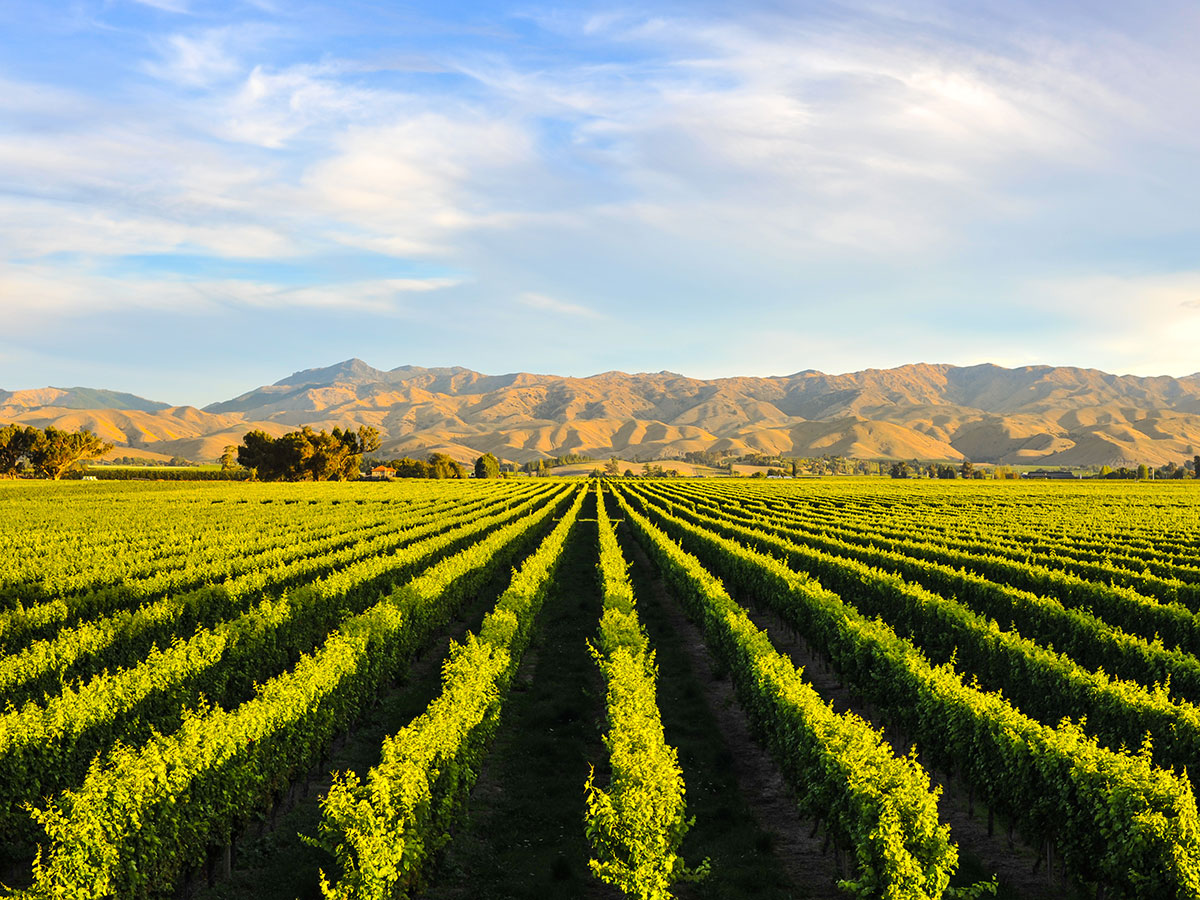Introduction
Conservation easements have long been a popular market-based tool for protecting private lands in the United States. These voluntary agreements, negotiated between landowners and nonprofit land trusts or other qualified entities, restrict certain uses of a property to maintain its conservation values. Tailored to each individual parcel, conservation easements offer an alternative to traditional regulatory or government-led conservation approaches.1“Frequently Asked Questions,” Land Trust Alliance, accessed January 30, 2024; Dominic P. Parker, “Conservation Easements: A Closer Look at Federal Tax Policy,” PERC Policy Series 34 (October 2005).
With a traditional conservation easement, landowners agree to permanently restrict specific land uses in exchange for direct payments or tax benefits. These restrictions typically limit residential and commercial development, subdivision, road building, clear cutting, and other activities. The terms of these agreements are perpetual and bind all future landowners.2“Conservation Easement FAQs,” Montana Association of Land Trusts, accessed January 30, 2024. Currently, more than 37 million acres across the United States are protected under such easements.3National Conservation Easement Database, NCED, available at: https://www.conservationeasement.us/.
The popularity of conservation easements has led to interest in applying the easement tool to a wider range of natural resources. This policy report focuses on one such innovation—the groundwater conservation easement—which has emerged as a novel approach to address groundwater depletion. In Colorado’s San Luis Valley, the creative use of a conservation easement to reduce groundwater pumping has attracted national attention as a more tailored alternative to traditional water-savings programs, as it allows farmers to choose how they achieve agreed-upon water reductions.4See, for example, Michael Elizabeth Sakas, “A 150-Year-Old San Luis Valley Farm Stops Growing Food to Save a Shrinking Water Supply. It Might Be the First Deal of Its Kind in the Country,” CPR News, July 11, 2022; Brett Walton, “Tax Incentives Find New Purpose for Conserving Water in American West,” Circle of Blue, March 9, 2023. Its recent implementation in Colorado is motivating efforts to apply similar approaches to other areas with overdrafted aquifers.5For example, the Voluntary Groundwater Conservation Act, introduced to Congress in July 2023 by U.S. Senators Michael Bennett and Jerry Moran, would create a new voluntary groundwater easement program under existing federal easement programs.
Flexibility can make groundwater easements an attractive alternative to other water conservation programs, as they can be structured to enable landowners to continue agricultural production while changing mangement practices to reduce water use.
With a groundwater conservation easement, landowners overlying an aquifer not only conserve the land’s surface, as happens under a typical conservation easement, but they also voluntarily limit groundwater pumping in exchange for direct payment or tax benefits. By using conservation easements to motivate groundwater pumping reductions, land trusts can achieve permanent water savings through tailored agreements with individual farmers, who can then decide how to best reduce water use. Broader application of this tool, however, may require targeted, state-level policy changes. For example, reforms to the legal and policy frameworks governing water use and conservation easements may be necessary to ensure that groundwater conservation easements can be a feasible and effective tool for aquifer recovery.
This report explains how groundwater conservation easements work and describes the conditions necessary for their successful implementation. It then evaluates the legal frameworks of several western states, including Arizona, Colorado, Idaho, Kansas, Nebraska, Nevada, New Mexico, and Wyoming, to identify potential opportunities and reforms to facilitate more widespread use of groundwater conservation easements.
Highlights
- Groundwater conservation easements have emerged as a novel approach to address aquifer depletion.
- By incentivizing voluntary pumping reductions through tailored agreements with landowners, such easements offer a creative alternative to traditional water-saving methods.
- Broader implementation of groundwater conservation easements may require targeted state-level policy reforms.
- If designed effectively, these reforms would help ensure that water savings from groundwater conservation easements contribute to long-term aquifer sustainability.
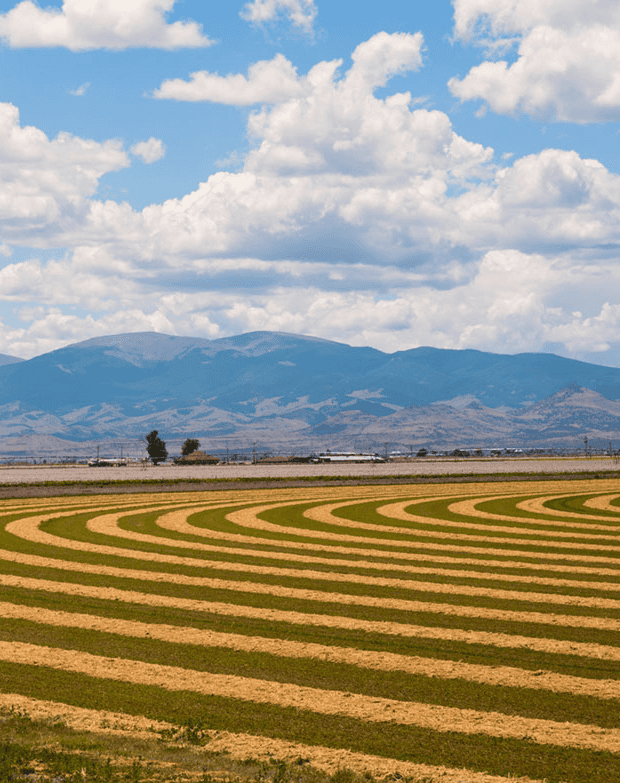
An Innovative Tool to Conserve Groundwater
Conservation easements are legal agreements that permanently limit uses of a property to protect its conservation values.6There are a number of well-founded and growing concerns with the requirement that many conservation easements must be permanent to qualify for tax benefits or other compensation programs. See, for example, Dominic P. Parker, “The Conservation-Easement Conundrum,” Property and Environment Research Center, February 12, 2019. Under these agreements, landowners agree to certain restrictions on the use of their land in exchange for direct payments or tax benefits.7Conservation easements may create tax deductions on federal or state income taxes. That said, because groundwater conservation easements are still nascent, it is unclear how the federal or state tax implications of conservation easements will transfer to groundwater conservation easements. Conservation easements are notoriously—and intentionally—inflexible to ensure that the conservation benefits of the land are permanently protected. In this way, conservation easements serve a dual purpose: They compensate landowners for maintaining the environmental benefits of their land and ensure the preservation of these benefits into the future.
The specific restrictions of a conservation easement are tailored to the particular property and the conservation objectives of the entity that holds the easement, often a land trust. During the easement acquisition process, the landowner and land trust negotiate to determine which terms will apply to the land. Once the terms are set, they can be difficult to amend or update. Traditional conservation easements typically encumber surface land-use rights by restricting future residential or commercial development and subdivision. Many easements also require landowners to continue their use of water to avoid forfeiture or abandonment of the water rights. Groundwater easements add an additional term to traditional conservation easements, specifically designed to address groundwater depletion. This new application of the easement concept enables land trusts and landowners to work together to reduce groundwater pumping on a parcel for the purpose of recovering overdrafted aquifers.8Conservation easements can include limits on land use activities as well as groundwater restrictions. (See Box 1.)
Like traditional conservation easements, groundwater conservation easements are voluntary, permanent, and specifically tailored to each individual farm or ranch.9Colorado Open Lands, “Peachwood Farms,” accessed January 30, 2024. In addition to the typical restrictions on land use, landowners agree to retire some or all of their groundwater pumping rights. These agreements compensate landowners for the value of their pumping reductions through cash payments, tax credits, or a combination of both.10States vary in their tax treatment and funding mechanisms for conservation easements, so it is unclear how states would treat groundwater conservation easements. At the time of writing, it is unclear whether groundwater conservation easements would qualify for federal tax incentives or federal easement purchase programs. As with other conservation easements, qualified land trusts monitor and enforce the terms of the agreements.
The emergence of groundwater conservation easements is timely, as aquifer depletion has become a growing concern throughout much of the American West.11Mira Rojanasakul et al., “America Is Using Up Its Groundwater Like There’s No Tomorrow,” The New York Times, August 28, 2023. Groundwater overdraft can lead to land subsidence, surface water impacts, water quality degradation, loss of storage capacity, and increased pumping costs.12Batool Ashraf et al., “Quantifying Anthropogenic Stress on Groundwater Resources,” Scientific Reports 7 (2017): 12910. Declining water tables can also reduce streamflow and result in the loss of riparian vegetation and wildlife habitat.13Water Science School, “Groundwater Decline and Depletion,” U.S. Geological Survey, June 6, 2018. Recent drought conditions have put additional pressures on aquifers, as surface water shortages cause irrigators to rely more on groundwater resources, which can take decades or longer to recharge.14Jacob D. Petersen-Perlman, Ismael Aguilar-Barajas, and Sharon B. Megdal, “Drought and Groundwater Management: Interconnections, Challenges, and Policy Responses,” Current Opinion in Environmental Science and Health 28 (2022): 100364; Sarfaraz Alam et al., “Can Managed Aquifer Recharge Mitigate the Groundwater Overdraft in California’s Central Valley?” Water Resources Research 56, no. 8 (2020): e2020WR027244. The severity of the situation underscores the need for new tools to encourage aquifer recovery.
Box 1: How Groundwater Conservation Easements Can Address Aquifer Depletion
Aquifer sustainability is achieved when groundwater withdrawals match an aquifer’s natural recharge rate from all sources, thereby preventing long-term depletion. However, in regions like Colorado’s San Luis Valley, excessive pumping has led to a reduction in aquifer levels, prompting the need for effective management strategies. Groundwater conservation easements can be one tool to promote aquifer sustainability. To understand how groundwater conservation easements can address overdrafted aquifers, it is important to understand the dynamics of groundwater.
Groundwater, stored in underground aquifers, is recharged through natural processes like rainfall and snowmelt percolating through the soil. This process is known as natural recharge. When water is pumped out faster than it is replenished, it leads to overdraft, where the aquifer levels drop consistently over time, it can eventually lead to depletion.
A groundwater conservation easement is a voluntary legal agreement that limits the amount of water that can be withdrawn from an aquifer on a particular parcel of land. This approach, as part of a suite of other water conservation tools, can help ensure that the amount of water being pumped from an aquifer does not exceed its natural recharge capacity, preventing aquifer overdraft. Importantly, not all pumping rights need to be retired for a basin to achieve aquifer sustainability, since some amount of groundwater can be withdrawn at a rate equal to or less than the recharge rate and avoid long-term aquifer depletion. Groundwater conservation easements can be an effective way to permanently relinquish a portion of pumping rights that exceed an aquifer’s sustainable rate of withdrawal.
Groundwater conservation easements offer several advantages to other common approaches to aquifer overdraft, such as fallowing programs. Fallowing agreements require farmers to stop agricultural production altogether, either permanently or on a field-by-field rotational basis. This approach, however, is often controversial among farming communities, as it can harm the economy, labor market, and overall community in an area.15Jean-Marc Bourgeon, K. William Easter, and Rodney B. W. Smith, “Water Markets and Third-Party Effects,” American Journal of Agricultural Economics 90, no. 4 (2008): 902-17; Andre Q. Dozier et al., “Declining Agricultural Production in Rapidly Urbanizing Semi-Arid Regions: Policy Tradeoffs and Sustainability Indicators,” Environmental Research Letters 12, no. 8 (2017): 085005. Moreover, such agreements are inflexible, as they prescribe a single method—fallowing—for water conservation. While fallowing can be feasible for short-term aquifer restoration, groundwater conservation easements provide farmers with greater flexibility in addressing long-term aquifer depletion by allowing them to decide the method by which they achieve that reduction. This flexibility can make groundwater easements an attractive alternative to other water conservation programs, as they can be structured to enable landowners to continue agricultural production while changing management practices to reduce water use.
The Case of Colorado’s San Luis Valley
One of the nation’s first groundwater conservation easements, recently developed in Colorado’s San Luis Valley, demonstrates how the easement concept can be applied to aquifer recovery.16Sakas, A 150-Year-Old San Luis Valley Farm. The example illustrates the potential of groundwater conservation easements to help communities address aquifer depletion while maintaining agricultural production and preserving ecological values.
Nestled between the San Juan and Sangre de Cristo mountain ranges, San Luis Valley is known for potato, alfalfa, and other vegetable crop production. Half a million acres in the valley are irrigated, often by drawing groundwater from the valley’s two major aquifers. This irrigated farmland drives the majority of the region’s economic activity and creates food sources and habitat for migrating birds and other wildlife.
In recent decades, increased groundwater pumping has exceeded the basin’s recharge capacity, causing aquifer levels to decline and impacting surface water. The community took steps to try to address this issue, including implementing a groundwater pumping fee and using government funds to pay farmers to temporarily fallow fields.17Steven M. Smith et al., “Responding to a Groundwater Crisis: The Effects of Self-Imposed Economic Incentives,” Journal of the Association of Environmental and Resource Economists 4, no. 4 (2017): 985-1023. While these efforts made some progress, aquifer levels continued to decline, prompting the Colorado legislature to mandate a basin-wide reduction in pumping to reach sustainable levels. If this reduction was not achieved, individual irrigators could face mandatory restrictions on pumping.
In response, Colorado Open Lands, a nonprofit land trust, began to explore whether the concept of a voluntary conservation easement could be applied to address groundwater depletion in the San Luis Valley. The group recognized that key aspects of conservation easements could be used to help address the valley’s groundwater challenges.
Box 2: San Luis Valley Groundwater Conservation Easement
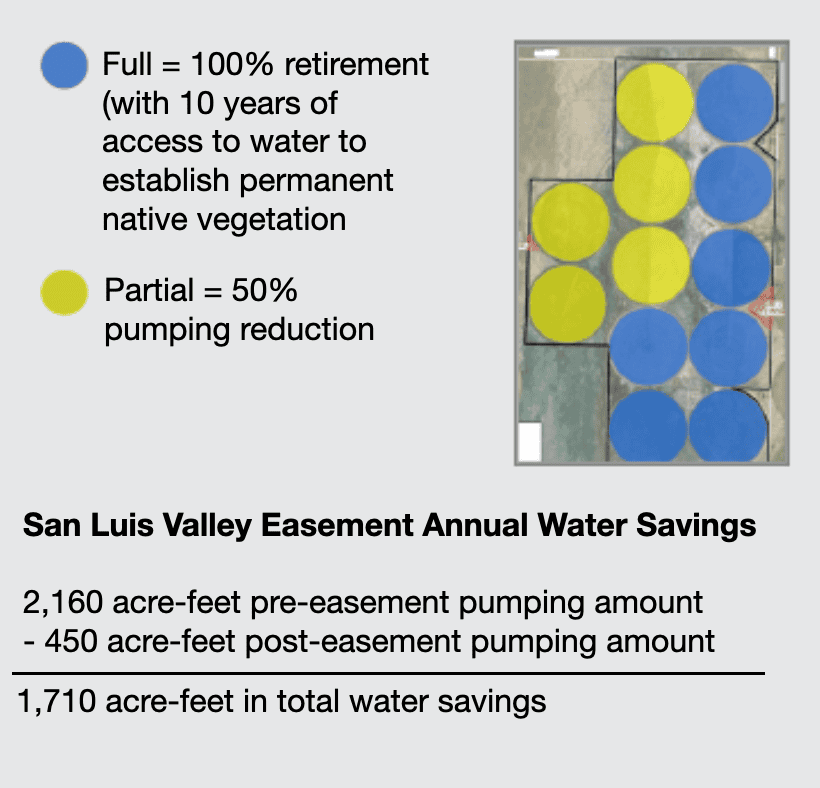
In 2022, the nonprofit land trust Colorado Open Lands completed a pilot groundwater conservation easement on a 1,800-acre farm in Colorado’s San Luis Valley. The easement will permanently retire pumping on seven of the farm’s 12 wells over the next decade and reduce pumping on the remaining five wells by half.
The easement’s water savings—totaling more than 1,700 acre-feet per year—are enough to meet the sustainability needs of the surrounding subdistrict, enabling other farmers in the area to continue operating. “If by discontinuing irrigation on my farm, it means that my neighbors may be able to keep their multigenerational farms in their families,” says the farmer Ron Bowman, “then it feels like the right thing to do.”
In 2022, Colorado Open Lands completed a groundwater conservation easement on Peachwood Farms, a 1,800-acre property in the San Luis Valley.18Sakas, A 150-Year-Old San Luis Valley Farm. The farm consists of 12 center pivots and accounts for about 10 percent of the pumping volume by irrigators in the area.19“Groundwater Conservation Easements: A Tool for Aquifer Recovery and Continued Farming and Ranching,” Colorado Open Lands, Fact Sheet. Under the agreement, wells for seven of the center pivots will be fully retired, while wells for the other five will have their pumping rates cut in half. (See Box 2.) For the wells that are being retired, water can still be used for the next 10 years at a gradually decreasing rate to revegetate the property with native plants.
The Peachwood Farms groundwater conservation easement will reduce groundwater pumping by more than 1,700 acre-feet per year.20Personal correspondence with Sarah Parmar, Director of Conservation, Colorado Open Lands, September 2023. This pumping reduction alone was enough to address the subdistrict’s over-pumping problem, thereby avoiding the need for mandatory cuts or other regulatory restrictions for farms in the area. In this way, by significantly reducing groundwater use on one property, the agreement enables the rest of the farmers in the valley to continue operating. Importantly, the water savings resulting from the agreement will not be available for pumping elsewhere, thus ensuring that the saved water remains in the aquifer.
The San Luis agreement is just one example of how groundwater conservation easements can work.21Another factor that led to the success of the Peachwood Farms groundwater conservation easement was the flexibility of funding conservation easements in Colorado afforded by the state’s unique transferable tax credit system. See Ariel Steele, “Experimenting with Tax Credits for Conservation,” PERC Reports 26, no. 4 (2008). In states that rely on traditional funding sources for conservation easements, it is unclear how groundwater conservation easements would be funded. In that case, the easement facilitated the full retirement of a farming operation, which helped maintain the sustainability of other farms and ranches in the region. In other cases, farmers could opt to put a portion of their groundwater rights under easement while continuing to use the rest for crop production. By implementing new, more efficient irrigation systems, some farms could produce the same yield while creating water savings. Most importantly, groundwater easements can be tailored to meet the specific needs of each community, at the discretion of each landowner. So long as certain conditions are met that allow these agreements to be successfully implemented, groundwater easement can serve as a powerful tool to address aquifer overdraft.
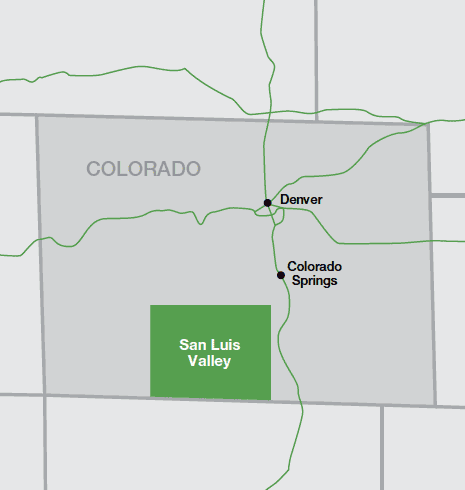
A Cold Desert Blooms
Nestled between the San Juan and Sangre de Cristo mountain ranges, southern Colorado’s San Luis Valley is roughly the size of Connecticut. With rainfall averaging six inches annually and an elevation above 7,000 feet, it is one of the world’s largest high desert valleys. Despite the cold desert climate, the valley has substantial water resources from the Rio Grande and groundwater. Today the valley is known for potato, alfalfa, and other vegetable crop production. half a million acres in the valley are irrigated, often by drawing groundwater from the valley’s two major aquifers. This irrigated farmland drives the majority of the region’s economic activity and creates food sources and habitat for migration birds and other wildlife.
What Made Innovation Possible in the San Luis Valley
In the case of the San Luis Valley groundwater conservation easement, several conditions ensured that the easement concept promoted aquifer sustainability. This section examines the conditions that increase the likelihood for successful implementation of groundwater easements and discusses how those were applied in Colorado.
Legal Authority to Apply Easement Concept to Groundwater
Foundationally, groundwater conservation easements rely on a state’s existing framework for conservation easements. Many states have a conservation easement enabling act or statutes that allows for the creation of conservation easements. These statutes specify the requirements that easements must meet and describe what activities an easement can or cannot restrict. In many states, these enabling statutes do not explicitly allow easements to restrict groundwater use.
Colorado is one of the only states that authorizes the use of conservation easements specifically for water conservation. The state’s easement enabling statute allows landowners to enter into easements to protect “land or water area” as well as “water rights beneficially used upon that land or water area.”22C.R.S. § 38-30.5-102. This statute gave landowners and land trusts reasonable confidence that permanently limiting groundwater pumping was a valid use of a conservation easement in Colorado.
Management of Groundwater Use to Avoid Open Access
For a groundwater conservation easement to effectively conserve water, it is essential that the underlying basin is not treated as an open-access resource. If some form of groundwater rights do not exist or limits on pumping are not enforced, irrigators have access to as much groundwater as they can withdraw. Groundwater conservation easements aim to reduce groundwater pumping on specific fields to sustainable levels. This goal, however, can only be achieved if overall groundwater extraction from the basin is managed and limited. Moreover, if the basin is an open-access resource, individual efforts to conserve water through easements could be offset by increased use from others, making it impossible to maintain a sustainable balance between extraction and natural recharge.23See, for example, Mani Rouhi Rad et al., “Policy Leakage or Policy Benefit? Spatial Spillovers from Conservation Policies in Common Property Resources,” Journal of the Association of Environmental and Resource Economists 8, no. 5 (2021): 923-53. The authors find that permanently retiring groundwater rights under common property resource management can result in increased pumping from neighboring groundwater users.
Colorado applies the prior appropriation doctrine to groundwater rights, which provides a means of defining rights to the resource based on the principle of “first in time, first in right.” Unlike an open-access system, the San Luis Valley had mechanisms in place to manage groundwater use. Groundwater rights in the valley were reasonably secure and well-defined, ensuring that the farmer had the ability to negotiate with a land trust on a conservation easement that could protect groundwater from future extraction. Other areas of the American West, however, lack well-defined groundwater rights.
Given the challenges associated with open-access groundwater resources, regions that have more complete and well-defined groundwater rights are more likely to succeed at implementing effective groundwater easements. On the other hand, areas that treat groundwater as an open-access resource, or have poorly defined groundwater rights, will be less likely to make productive use of this tool.
Legal Mechanisms to Protect Groundwater Savings
A related concern is the ability to protect the water savings resulting from a groundwater conservation easement. To address this, there must be a way to ensure that the water left in an aquifer as a result of the easement is not available to another irrigator or water user. Therefore, policies must be in place that allow pumping reductions to occur without the risk that those reductions will be offset by additional pumping elsewhere from the aquifer.
The prior appropriation doctrine requires that water be put to certain legally defined “beneficial” uses, which have historically been limited to agricultural, municipal, and industrial uses. Conservation, or aquifer recharge, has not traditionally been considered a beneficial use of a water right. If water is not put to beneficial use, it can be considered “abandoned” or “forfeited” and therefore made available to other water users. This creates obvious barriers to groundwater conservation easements. If water conserved from an easement would be made available to other water users, then landowners and land trusts will have little incentive to negotiate groundwater easements, since there would be no guarantee it would result in overall water savings.
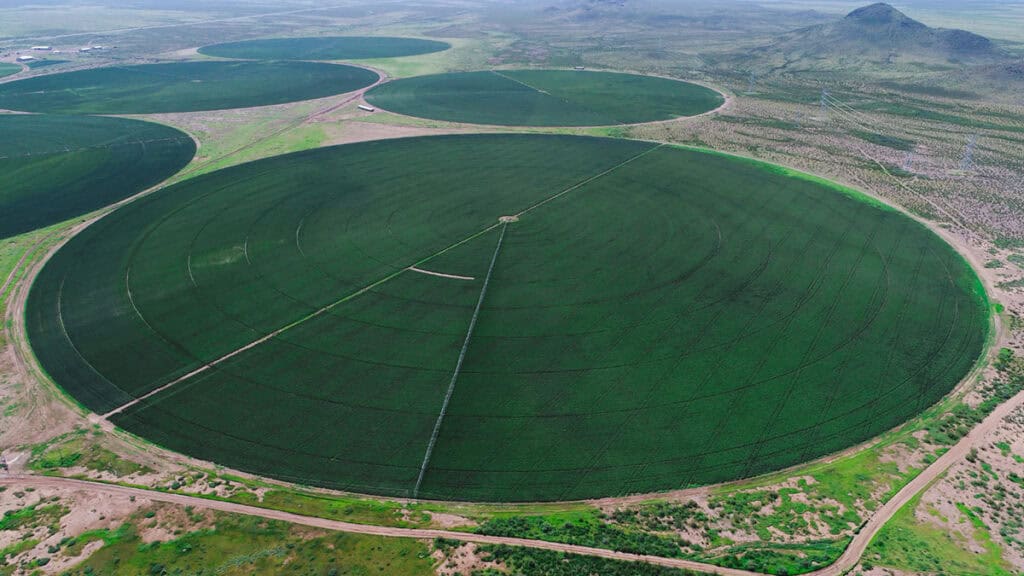
Abandonment occurs when a rightsholder intends to discontinue active use of a portion of their water right, which is then made available to other water users. Importantly, the abandoned amount of water is subtracted from the user’s original water allocation, thereby diminishing their overall water right. Colorado water law, however, provides certain provisions that protect from abandonment water enrolled in a conservation program or within a conservancy district.24C.R.S. § 37-92-103(2)(b)(ii). Due to this legal protection, any water right that is encumbered in a groundwater conservation easement and enrolled in a conservation program is legally protected from being considered abandoned.25The conservation program is another means of ensuring that the water right is protected in the long term, and that the water right will not be reissued by the state due to abandonment or forfeiture. These provisions encouraged Colorado Open Lands to work with the local conservation district to create a formal conservation program in which water rights could be enrolled. In this way, the land trust could conserve land in the valley and limit groundwater usage in a flexible and compensated way without farmers fearing curtailment.
Measurement and Monitoring of Groundwater Pumping
Groundwater conservation easements also require the ability to measure and monitor groundwater pumping at the individual well or property level. If the amount of groundwater pumping is unknown or uncertain, land trusts or other entities will be unable to monitor and verify how much groundwater is saved from an easement. Moreover, if there is no baseline measurement of an irrigator’s past pumping levels, then land trusts will be unable to quantify and value the reductions achieved by an easement. This means it is crucial to be able to measure both current and historic groundwater pumping levels.
These expectations require well monitoring technologies to accurately measure pumping behavior. In many areas of the American West, individual well meters track water use, providing both historic and current pumping data. In some cases, electronic monitoring sensors or meters are attached to wells to provide automated reporting of pumping activity.26See, for example, Sarah Heard, Matthew Fienup, and E.J. Remson, “The First SGMA Groundwater Market Is Trading: The Importance of Good Design and the Risks of Getting It Wrong,” California Agriculture 75, no. 2(2021): 50-56. The ability to access real-time pumping data in a basin can reduce the costs of monitoring and enforcing an easement’s terms. Accurate and precise measurement enhances the flexibility of groundwater easements, for both the grantor and grantee.
In the San Luis Valley, farmers faced a risk of state intervention and forced curtailment of groundwater use due to unsustainable groundwater extraction.27Alamosa Citizen and Mark Obmascik, “The Water Supply of the San Luis Valley Faces Pressure As Never Before,” The Colorado Sun, August 29, 2021. In response, years ago irrigators formed several groundwater subdistricts to self-regulate groundwater use in an attempt to avoid curtailment. As a result, wells in the area have been monitored for decades. In particular, Subdistrict 4, the subdistrict that encompasses Peachwood Farms, prioritized groundwater reduction and a stable, healthy agricultural economy, which meant farmers there had already been monitoring and limiting groundwater use.28“Subdistrict No. 4,” Rio Grande Water Conservation District, accessed January 22, 2024. Because groundwater measurement and monitoring were already occurring in the San Luis Valley, it was easier for Colorado Open Lands to pursue a groundwater conservation easement on Peachwood Farms without the upfront costs of establishing monitoring.
Groundwater Valuation Method
To qualify for compensation, groundwater conservation easements, like most traditional conservation easements, require an economic valuation of the foregone activity—in this case, reduced water use. Easements are valued using a before-and-after appraisal method, which compares the value of a property with an easement to the value of a similar property without an easement. For groundwater conservation easements to be feasible, there must be a sufficient number of comparable sales of land with and without connected groundwater rights. Because groundwater conservation easements are a relatively new innovation, however, finding comparable sales may be a challenge in many areas.
In the Peachwood Farms example, appraisers in the valley lacked comparable sales, which prevented them from using the before-and-after market valuation method. The value of the conserved groundwater, therefore, was benchmarked using a nearby fallow parcel. The appraiser estimated a value for the property with its current crop production and then again estimated its value as if there were no crop production. The difference in the value was attributed to the applied water. Thus, if pumping was reduced by a certain percentage, the percent reduction multiplied by the difference in value yielded the easement value.29Abbey Warner, “Groundwater Conservation Easements for Aquifer Recovery in the San Luis Valley,” Colorado Open Lands and Rio Grande Headwaters Land Trust (undated).
Community Support and Public Benefit
As a novel tool for recovering aquifers, community support for groundwater easements is also important. The more water users who enroll in groundwater easements, the greater the potential for this tool to help stabilize aquifer levels, which generates broader economic and conservation benefits. By including communities in the development of the tool and process, practitioners increase the likelihood of adoption.
In the San Luis Valley, Colorado Open Lands worked with landowners early on to incorporate concerns regarding agricultural longevity and devised an approach that achieved groundwater conservation without compromising the needs of the agricultural community. The Peachwood Farms easement gained broad support because its pumping reductions allowed other farmers in the subdistrict to avoid mandatory pumping cutbacks threatened by the state. In this way, by permanently reducing groundwater pumping on one farm the easement allowed other farmers in the region to continue operating.
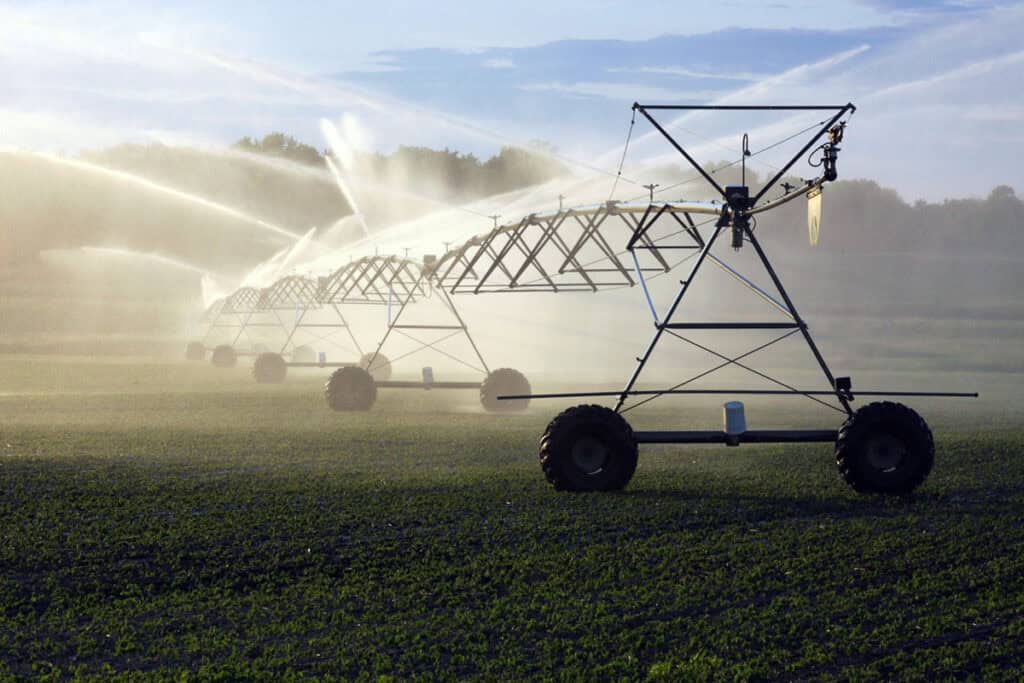
Growing the Market for Groundwater Conservation Easements
Beyond Colorado’s San Luis Valley, there is potential for groundwater conservation easements to be applied more broadly to address aquifer depletion. This section examines the relevant legal and policy frameworks of several other states—Arizona, Idaho, Kansas, Montana, Nebraska, New Mexico, and Wyoming—to assess the feasibility of implementing groundwater conservation easements in these states.30California, while a state with significant groundwater implications, is not reviewed for purposes of this report. California relies on the Sustainable Groundwater Management Act (SGMA) to regulate groundwater usage and trading within the state. SGMA means that California has its own unique means of conserving groundwater, with limited implications for the rest of the states reviewed.
This section is not intended to be a comprehensive review of all policies that may make a groundwater conservation easement feasible in a particular state; instead, it offers readers an overview of some key conditions that may make groundwater conservation easements more or less feasible. Moreover, even within states, individual basins and subbasins may be managed differently, which may have additional implications for groundwater conservation easements.
Legal Authority to Apply Easement Concept to Groundwater
Nearly every state has adopted some type of conservation easement enabling act, and many have adopted the Uniform Conservation Easement Act. The act is a form of model legislation that has been adopted in full or in part by many states to create consistency in the establishment, enforcement, and interpretation of conservation easements.31Uniform acts are the product of the Uniform Law Commission, a group of expert attorneys who help create legislation that is consistent among states with regard to complicated legal issues. “About Us,” Uniform Law Commission, accessed January 30, 2024.
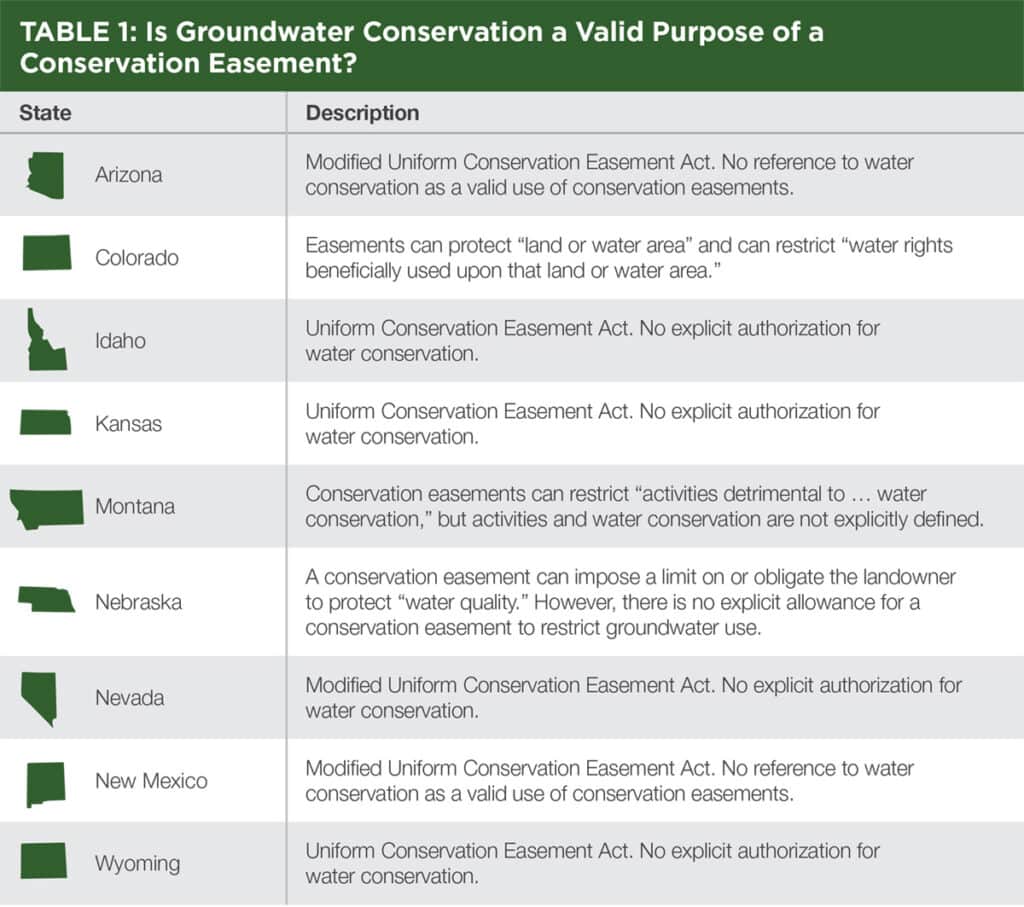
Sources: This table is based on a review of the relevant state statutes and Alexander Bennett et al., “Groundwater Laws and Regulations: A Preliminary Survey of Thirteen U.S. States,” Vol. 1, 2nd Ed., EENRS Program Reports & Publications 7 (2020); Abigail Adkins et al., “Groundwater Laws and Regulations: Survey of Sixteen U.S. States,” Vol. 2, 2nd Ed., EENRS Program Reports & Publications 12 (2022); “Conservation Easement Act,” Uniform Law Commission.
Note: Groundwater conservation easements may be possible in listed states with unclear authority, but the legal authority to implement them is not explicitly defined in statute.
Because the Uniform Conservation Easement Act predates the emergence of groundwater conservation easements, the statute does not specifically allow for their creation.32Of the states reviewed here, a majority have not tailored the Uniform Conservation Easement Act with regard to water rights. The act requires that easements must “retain or protect natural, scenic, or open-space values of real property, assuring its availability for agricultural, forest, recreational, or open-space use, protecting natural resources, maintaining or enhancing air or water quality.” However, the rest of the statute does not mention water conservation.33“Conservation Easement Act,” Uniform Law Commission, accessed January 30, 2024. The language of the statute is unclear whether groundwater conservation easements would be allowed in the states that have adopted the Uniform Conservation Easement Act. Of the states included in this report, Arizona, Idaho, Kansas, Nevada, New Mexico, and Wyoming have each adopted the act or a modified version of it, while Colorado, Montana, and Nebraska have drafted their own enabling statutes.
As shown in Table 1, Colorado clearly allows water rights to be encumbered by a conservation easement, though it does not explicitly authorize restrictions on groundwater. Other states’ conservation easement enabling acts are less explicit about whether they allow for restrictions on water use. Montana’s statute, for example, allows conservation easements to restrict activities that are detrimental to “water conservation.”34Mont. Code Ann. §§ 76-6-201 to 76-6-211 (2003). This term could be interpreted to include restrictions on groundwater use, but because the statute does not specify what is meant by “water conservation,” it remains uncertain whether a conservation easement can limit groundwater use in Montana. Updates to statutory language may be necessary in certain states to explicitly allow for a conservation easement to restrict groundwater pumping.
Groundwater Governance Factors that Influence Easement Success
Once the statutory authority exists to establish groundwater conservation easements, the success of these easements is significantly influenced by the quality of groundwater governance institutions, which are the rules that govern how groundwater is allocated, used, and managed. There is significant variation in these institutions across states, from open-access basins with no limits on pumping to closed basins with permit requirements, pumping limits, and restrictions on new entrants. The effectiveness of these institutions can influence the success of groundwater conservation easements.
As described above, groundwater conservation easements are more likely to succeed in basins with effective governance institutions that avoid open-access conditions and clarify how groundwater is allocated and managed. In particular, groundwater conservation easements will be more successful if landowners have clear and enforceable property rights to the groundwater they are conserving. If landowners do not have secure groundwater rights, the effectiveness of a groundwater conservation easement will be limited.
Table 2 attempts to generalize how these groundwater governance factors vary across examined states. It uses a groundwater governance tier classification system, adapted from natural resource economists Eric Edwards and Todd Guilfoos, to characterize governance factors that are capable of supporting groundwater conservation easements.35Eric C. Edwards and Todd Guilfoos, “The Economics of Groundwater Governance Institutions across the Globe,” Applied Economic Perspectives and Policy 43, no. 4 (2021):1571-94. This classification system represents a progression of governance factors, in which higher tiers include the features of the lower tiers. States with higher tier numbers (e.g., Tier V) are more likely to have the institutional frameworks necessary to support effective groundwater easements, while states with lower tier numbers (e.g., Tier I) are less likely to support them. These classifications are made with the caveat that there is often basin-level variation in groundwater governance within states that can affect the feasibility of groundwater conservation easements.
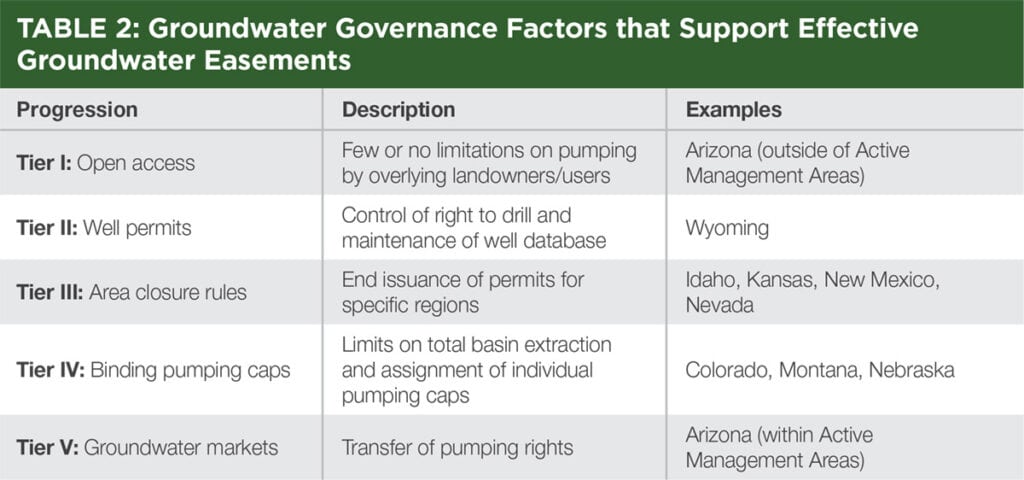
Sources: Adapted from Eric C. Edwards and Todd Guilfoos, “The Economics of Groundwater Governance Institutions across the Globe,” Applied Economic Perspectives and Policy 43, no. 4 (2021):1571-94; includes information from Alexander Bennett et al., “Groundwater Laws and Regulations: A Preliminary Survey of Thirteen U.S. States,” Vol. 1, 2nd Ed., EENRS Program Reports & Publications 7 (2020); Abigail Adkins et al., “Groundwater Laws and Regulations: Survey of Sixteen U.S. States,” Vol. 2, 2nd Ed., EENRS Program Reports & Publications 12 (2022).36Our ranking applies to non-exempt wells in Montana. Wells that are exempt, such as de minimis wells, would fall under Tier I or Tier II since there is no restriction on the number of those wells in a location.
The tiers in Table 2 describe a progression of governance factors that contribute to groundwater easement success, ranging from open-access basins (Tier I) to basins with active groundwater markets (Tier V). In basins that require well permits (Tier II), individual water users are permitted to use a certain amount of groundwater for specific purposes. Some basins also have area closure rules (Tier III), which ensure that an individual with an existing permit can pump a specified amount and that no new entrants can reduce that amount by drilling a new well. Basins can also enact binding pumping caps (Tier IV), which limit the amount of water pumped from specific wells. In addition to these governance factors, some basins also have functioning groundwater markets (Tier V) that allow for the transfer of pumping rights.
These governance factors likely contribute directly to the effectiveness of groundwater conservation easements. For example, if 1) irrigators have rights to specific quantities of water, 2) new wells cannot reduce those quantities, and 3) current users are capped from increasing their withdrawals, then easements will be more likely to generate durable groundwater savings.
Effective governance gives groundwater rights value, which is necessary for negotiating and structuring easement agreements with landowners. The completeness and security of these rights varies across states. In Kansas’s High Plains Aquifer region, for example, recent research has shown that groundwater rights, though incomplete, allow groundwater access to be capitalized into land values.37Eric C. Edwards, Nathan P. Hendricks, and Gabriel S. Sampson, “The Capitalization of Incomplete Property Rights to the Groundwater Commons,” Working Paper (June 2023). This means that groundwater access has meaningful economic value, which is essential for groundwater easements. In other areas where groundwater rights are less secure, there may not be enough economic value to form the basis of an effective groundwater conservation easement.
Given the importance of groundwater rights, the level of adjudication within a basin is also critical. If a basin is not fully adjudicated, then water users cannot be certain of their right to a quantity or use of water over time. In the same way, land trusts will be hesitant to enter into easements with landowners who have not adjudicated their groundwater rights. Some states, such as Idaho and New Mexico, have fully adjudicated groundwater rights, while in other states the adjudication process is incomplete and ongoing.
Legal Mechanisms to Protect Groundwater Savings
For a groundwater conservation easement to be successful, state water law must provide a means of ensuring that the easement’s pumping reductions are not offset by another irrigator’s increased water use. There are several ways this can be done. For example, states could provide a legal mechanism by which conserved water can be protected from abandonment, similar to how Colorado protects water rights enrolled in a conservation program from being considered abandoned. Alternatively, states could allow conservation or aquifer recharge to be considered a beneficial use of groundwater, thereby enabling users to hold those rights for non-use and protect them from reallocation to other water users. Ultimately, these different paths can achieve the same result, but they may involve different considerations and implementation processes.
Table 3 reports whether states have abandonment or beneficial-use policies that allow for groundwater conservation easements to effectively conserve groundwater. There is significant variation in these policies across states. For example, while some states such as Wyoming have no legal mechanism to protect a groundwater easement’s water savings, other states such as Colorado and Kansas protect water rights that are enrolled in a conservation program from abandonment claims. Like in Colorado, Kansas law states that a water right will not be considered abandoned if the right is included in a conservation program established by the state’s chief engineer. However, the Kansas statute specifies that an approved conservation program shall not exceed 10 years, which might create conflict given that conservation easements create permanent restrictions.38Kan. Stat. Ann. 82a-718(d), 82a-741. On the other hand, Idaho generally limits beneficial use to agriculture, domestic use, manufacturing, mining, and hydropower.39Idaho Const. Art. XV, § 3; Idaho, Dep’t of Parks v. Idaho Dep’t of Water Admin., 530 P.2d 924, 931 (Idaho 1974) (Bakes, J. concurring). Idaho water users, however, are not subject to forfeiture or abandonment for non-use if they enter their water right in a conservation practice that results in the pumping or diversion of less water than originally authorized while maintaining beneficial use of water.40Idaho Code § 42-223.
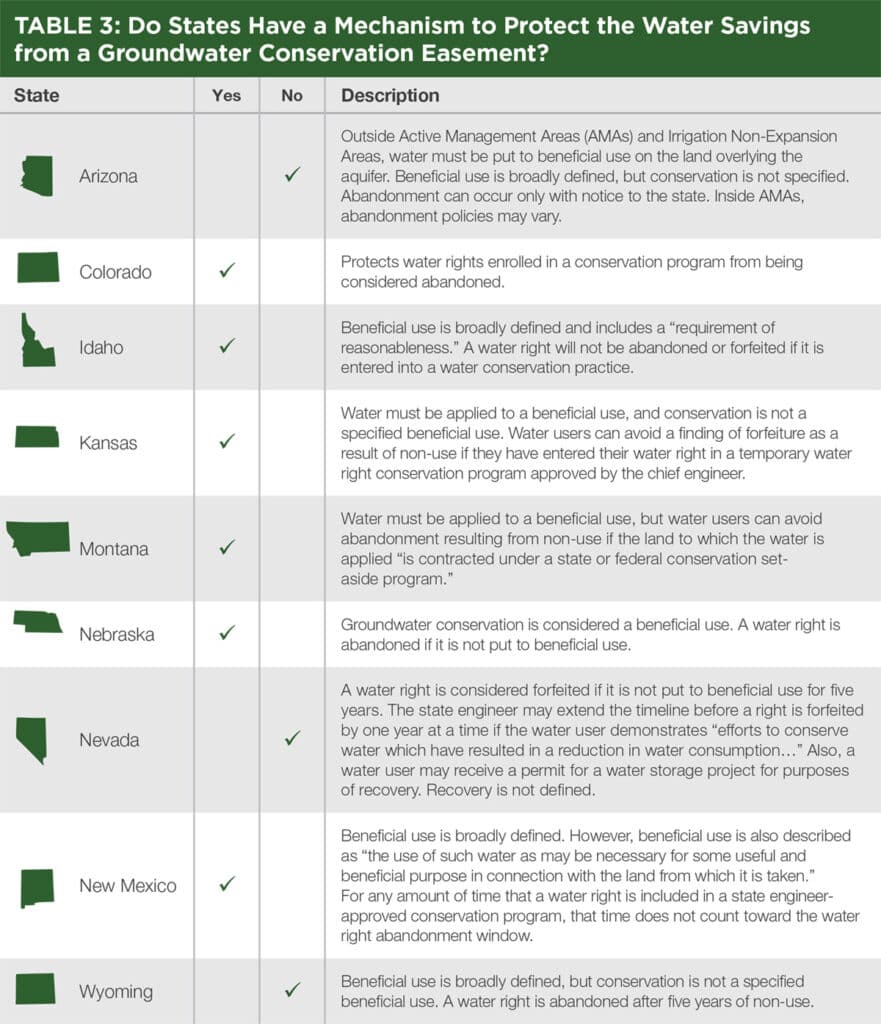
Sources: This table is based on a review of the relevant state statutes and Alexander Bennett et al., “Groundwater Laws and Regulations: A Preliminary Survey of Thirteen U.S. States,” Vol. 1, 2nd Ed., EENRS Program Reports & Publications 7 (2020); Abigail Adkins et al., “Groundwater Laws and Regulations: Survey of Sixteen U.S. States,” Vol. 2, 2nd Ed., EENRS Program Reports & Publications 12 (2022).
Note: In states that do have mechanisms to protect groundwater pumping reductions from reallocation, the protection of groundwater is not necessarily guaranteed. This table reports whether states have at least some existing legal or policy mechanism that could prevent groundwater from being reallocated once it is conserved by a groundwater conservation easement. If such a mechanism does not exist, then any water use that is reduced as a result of a groundwater conservation easement may be subject to reallocation following non-beneficial use or abandonment proceedings.
Measurement and Monitoring of Groundwater Pumping
For a groundwater conservation easement to be successful, there must be a way to measure and monitor irrigators’ pumping levels. Measuring current use ensures that water users are abiding by the terms of their agreements, while historical pumping data provides a baseline from which an easement’s water savings can be calculated and valued. Well-level measurement and monitoring requirements could be imposed as conditions of a landowner’s acceptance of an easement or may already be required by states or groundwater basins.
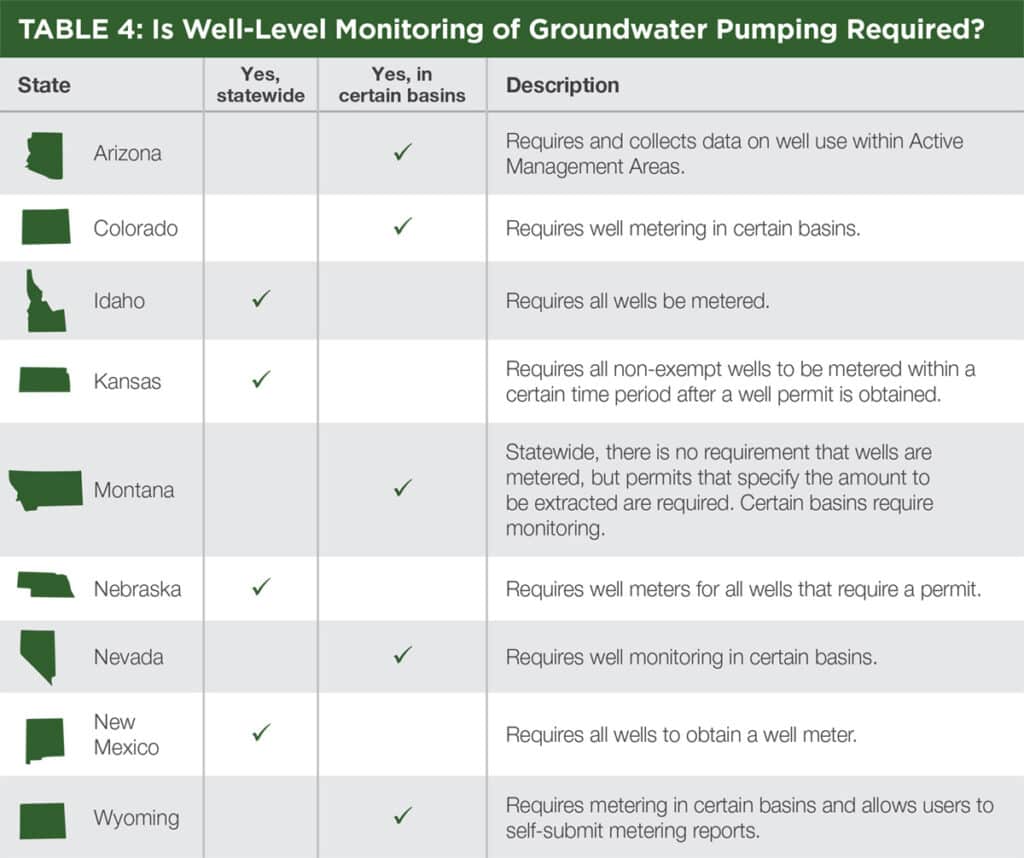
Sources: This table is based on a review of the relevant state statutes and Alexander Bennett et al., “Groundwater Laws and Regulations: A Preliminary Survey of Thirteen U.S. States,” Vol. 1, 2nd Ed., EENRS Program Reports & Publications 7 (2020); Abigail Adkins et al., “Groundwater Laws and Regulations: Survey of Sixteen U.S. States,” Vol. 2, 2nd Ed., EENRS Program Reports & Publications 12 (2022).
Note: Some states, such as Idaho, require individual well metering but, due to time constraints, have not yet fully implemented well metering programs.
Table 4 summarizes the well-monitoring requirements across our states of interest. States have different levels of well-monitoring requirements and different types of historical data accessible. For example, Idaho requires well metering for all groundwater users in the Eastern Snake Plain Aquifer and recently expanded the program statewide.41“Water Measurement,” Idaho Department of Water Resources, accessed October 19, 2023. In Wyoming, well owners can self-submit data to the state, but it is not a requirement, except in certain districts. In Montana, the state requires a groundwater permit, which specifies an amount, and requires a meter with well installation in certain basins.42Mont. Admin. R. 36.12.905. Several states offer incentives or rebate programs to encourage water users to meter their wells.
Conclusion
The recent implementation of a groundwater conservation easement in Colorado’s San Luis Valley demonstrates how easements can promote aquifer recovery when certain key conditions are met. By incentivizing voluntary reductions in pumping through tailored agreements between landowners and land trusts, groundwater easements offer a market-based alternative to traditional water-saving methods or top-down regulatory approaches to address groundwater depletion. When applied under the appropriate legal frameworks and effective governance institutions, groundwater conservation easements show promise as an innovative tool to help recover aquifers in a flexible, community-supported manner.
Broader implementation of groundwater conservation easements, however, may require legal and policy reforms in many states. States must allow conservation easements to restrict groundwater use, or at least not prohibit them from doing so. Water users must have sufficiently well-defined and defensible groundwater rights to avoid open-access depletion. And policies must be in place that safeguard the groundwater conserved by a groundwater conservation easement, maintaining incentives for conservationists and landowners to negotiate mutually beneficial agreements.
Agricultural communities are rightly sensitive to “buy and dry” strategies that could undermine rural economies. Groundwater easements avoid this fate by enabling continued agricultural production while compensating voluntary conservation. To gain broader support for this tool, however, it is essential to engage with communities and stakeholders early and meaningfully. Practitioners should take care to understand the economic pressures and cultural norms that shape landowners’ perspectives in overdrafted basins and negotiate easement agreements that address those concerns.
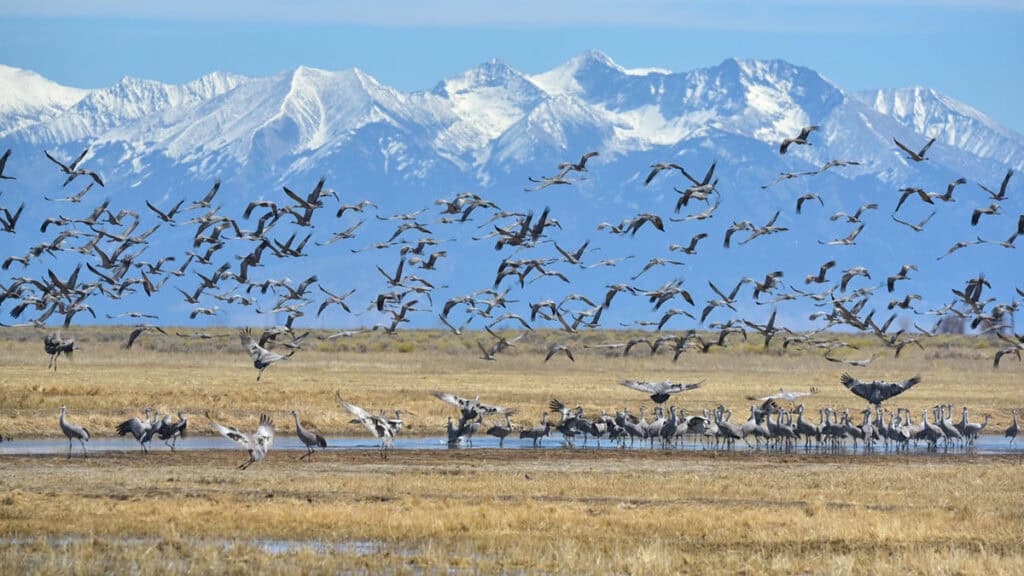
Policymakers and practitioners should also explore the feasibility of nonpermanent options for groundwater conservation. Groundwater conservation easements create flexibility for water rights holders because they allow water users to decide how to reduce their water use. Yet, because groundwater conservation easements are built on the foundation of perpetual conservation easements, they create permanent restrictions on land use that some landowners might be hesitant about. Shorter-term conservation agreements, such as a conservation lease, could mimic the benefits of a groundwater conservation easement for landowners who may be hesitant about permanent commitments. This approach could address growing concerns about the permanency of traditional conservation easements and the need for more adaptable alternative structures.43See, for example, Ashley D. Miller et al., “Factors Impacting Agricultural Landowners’ Willingness to Enter into Conservation Easements: A Case Study,” Society & Natural Resources 24, no. 1 (2010): 65-74. It might also provide a way to trial conservation efforts, adjust to changing environmental conditions, and respond to evolving community needs over time. Considering such alternatives could enhance the attractiveness and practicality of groundwater conservation efforts.
Water scarcity is a growing concern throughout much of the United States, exacerbated by a lack of adequate tools to conserve groundwater. Groundwater conservation easements offer a promising new tool to help address water scarcity challenges. Conservationists and policymakers should carefully consider the factors examined in this report when designing and implementing groundwater easements. By doing so, they can help create the conditions necessary for groundwater conservation easements to play a significant role in addressing groundwater challenges and promoting aquifer recovery.
